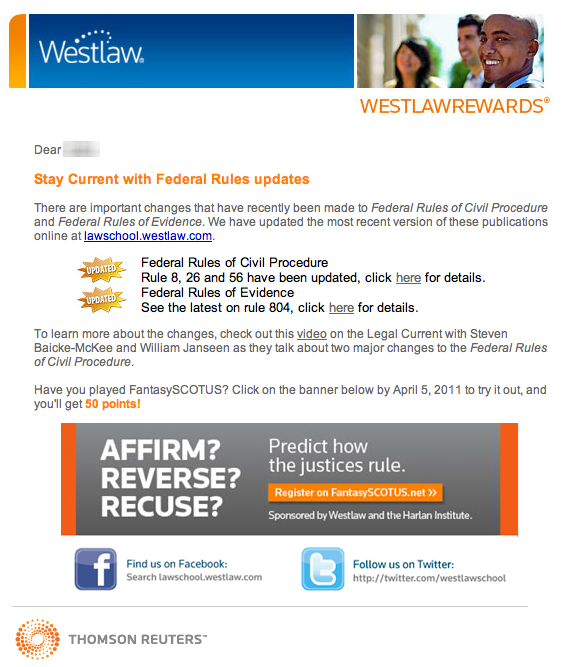I am currently co-authoring an article with Adam Aft and Corey Carpenter, titled “FantasySCOTUS: Crowdsourcing A Prediction Market for the Supreme Court.” This piece looks at the accuracy of predictions of FantasySCOTUS during the October 2009 term. I will post more of the article in due time. For now, here is the introduction, where we draw several parallels between following the Supreme and following professional supports:
In many respects, following the Supreme Court of the United States mirrors following professional sports. Senate confirmation hearings, much like the workouts that precede entry-level drafts or exhibition games , permit fans to learn about the qualities and particulars of a candidate—whether a Justice-to-be, or an aspiring athlete. In fact, during the lead-up to a nomination, Court experts rank the nominees on the “short list” in the same way that sports writers rank who will be the first pick in the draft. The Supreme Court term, which begins the first Monday in October and historically concludes the last week in June roughly approximates the NBA and NHL seasons. Through granting writs of certiorari, the Court sets its own calendar for oral arguments, in the same way that professional sports leagues release team schedules. The most significant cases, or games, are sprinkled throughout the term, or season. The oral arguments, much like practices or scrimmages before the big game, give fans an insight into the strategies, strengths, and weaknesses of the various portions of the team—the Justices often signal their views through questions and comments.
Following the oral arguments, legal nerds speculate about the outcome of the case, and how the nine Justices will vote, much like sports nuts assess how the team performed during practice, and which player will shine. Not unlike most sports, the biggest and most important issues are resolved at the end of the season—the Supreme Court historically resolves the most controversial cases during the last week of the term. June is playoff time at the Supreme Court. During the hand-down of the opinion, the equivalent of game day at One First Street, the issue is resolved, and the case is (usually) decided. Emerging from behind the crimson curtains at the marble palace and majestically approaching the bench, the Justices, like athletes emerging from the tunnel at the stadium and trotting towards the sideline, are the superstars of their courts.
Sports fans, no longer content to simply watch games at home, have taken to the Internet and joined fantasy leagues. Players in these leagues—which have exploded in popularity in recent years —are rewarded for accurately predicting how their players and teams will perform. With all of the parallels between professional sport watching and SCOTUS-watching, why not create a fantasy league for the Supreme Court? Enter FantasySCOTUS.net, the Internet’s Premier Supreme Court Fantasy League from the Harlan Institute. With 8,000 members and rising, CNN.com declared FantasySCOTUS the “hottest new fantasy-league game.” The Legal Blog Watch deemed FantasySCOTUS the “new gold standard in Supreme Court geekery.” Justice Breyer praised FantasySCOTUS for making the public more interested in the Supreme Court Beyond serving as a cool forum for Court nerds to brag about their Supreme Court soothsaying abilities, and tapping into tapping into the fervor and fascination of sports fans following their favorite teams, FantasySCOTUS is the first crowdsourced prediction market for jurisprudential speculation.

